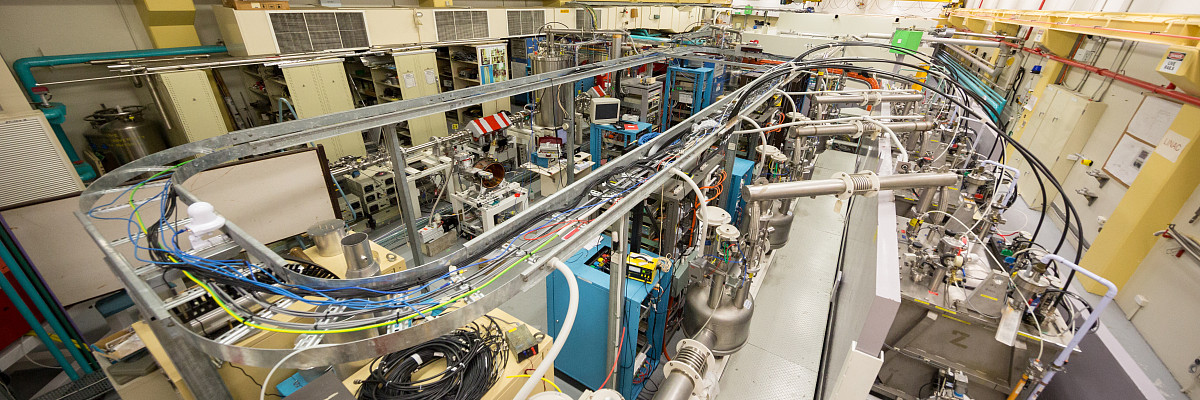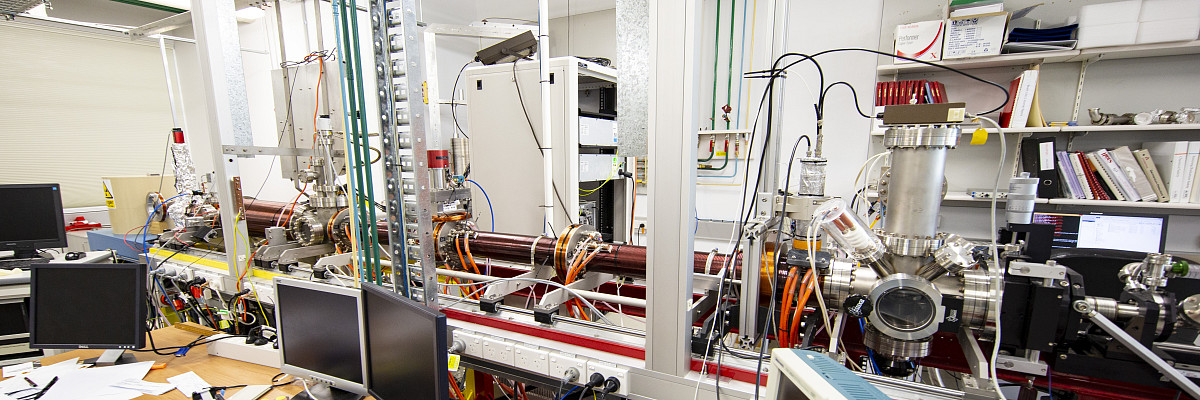
The Heavy Ion Accelerator Facility (HIAF) consists of a 15 million volt tandem electrostatic accelerator with an additional 6 million volt linear accelerator loop. The facility operates 24 hours a day, running up to 5000 hours each year. It has been operating since 1973.
Driven by Australia’s largest and highest energy ion accelerator, ions ranging from hydrogen to plutonium can be accelerated. Eleven adaptable beamlines and myriad detector systems allow a wide variety of experiments to be performed.

The Australian Positron Beamline Facility consists of two positron beamlines, one for materials studies and one for atomic and molecular physics experiments. The beamlines are built around the technology of buffer gas trapping, and produce a pulsed, magnetically confined beam of positrons for use in experiments.
The beams operate in two modes, either high resolution or short pulse mode. With the high resolution beam, studies are made of positron scattering with a precision and accuracy that has not been traditionally possible in positron physics. This will lead to a new insight into positron-matter interactions at a fundamental level.
In the short pulse mode, the positrons are compressed to sub-ns pulses and injected into a target material of choice, at energies up to 20kV. The timing characteristics of the resultant annihilation are then analysed and provide information about the structure of the material in question. In particular, this technique is sensitive to small voids in the target sample, of a size that is critical for myriad properties such as permeability in polymers or the early stages of fatigue in metals.
The beamlines are a result of a collaboration between a number of Australian institutions, ANU, CSIRO, Flinders University, Adelaide University and Charles Darwin University.